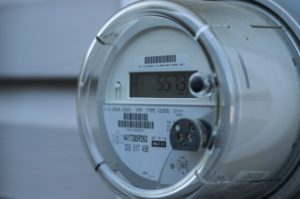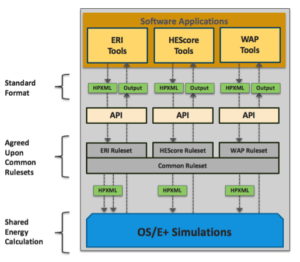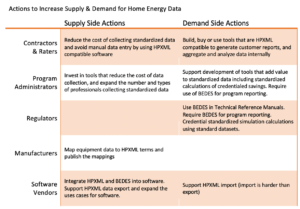Data Standards, Energy Efficiency and the Digital Data Economy
Greg Thomas
March 13, 2019
Digital data is so big that politicians are starting to talk about the need to break up the companies that manage and profit from much of our data, like Google, Facebook and Amazon. These companies know what to sell you and when you are interested in buying. The better they are at using data, the more efficient they are, the more money they make, and the faster they grow. If data is so valuable and powerful, why haven’t we seen energy efficiency companies succeed in using data to grow dramatically?
Why Should We Care About Data Standards?
The energy efficiency industry is a fascinating blend of regulations and incentives implemented in the public interest in conjunction with the exploitation of opportunities for profit by the private market. Many of us in the private sector are in this business because we get to pursue the common good at the same time as advancing our own careers and companies. One thing that both the public and private sector interests should care about is the efficient delivery of energy efficiency.
As a planet, we urgently need to focus resources on those investments that will be most cost effective in reducing our production of greenhouse gases. We want our public investments to go as far as possible, and we want our public investments to be combined with private investments so our public funds accomplish as much as possible.
As members of the energy efficiency industry we, of course, firmly believe that energy efficiency is the least cost method to accomplish our objectives. But is it still really the least cost approach to reducing carbon? Is energy efficiency still worth significant public incentives? How big an incentive will it take to incentivize large numbers of private building owners to invest in carbon reducing technologies?
Gas prices are not what they used to be, which lengthens the return on many homeowner investments. Solar, wind and battery prices are dropping fast. If the energy efficiency industry doesn't reduce costs and increase value, it will get priced out of the competition for public investment support.

What can we do to reduce the cost of implementing energy efficiency? It is not uncommon for contractors that provide whole house energy upgrades to decide that the cost of participating in an energy efficiency program is not worth the value of the incentive it provides.
A utility program that delivers whole house incentives may be defining data differently from an HVAC program operated by the same utility. When contractors provide services to customers in a new utility territory, it is not uncommon for them to run a parallel data management process for their current operations. Navigating different data requirements day-to-day is not cheap for contractors. Increasing the value of program participation and reducing the operational overhead would seem to be a real win-win scenario.

How do we increase the public benefit value of energy efficiency? Electric utilities (and their ratepayers) are spending roughly $70 billion dollars a year on generation and grid modernization (Enerlytics 2017 from a presentation by Chris Neme at MEEA Midwest Regional Conference 2019). Is efficiency able to help them meet these requirements more cost effectively than solar, wind and batteries? Research by Performance Systems Development (PSD), funded by E4TheFuture, on the demand metrics used by regulated energy efficiency programs, has shown that the 30 year old simplified calculations used by most programs are not accurate enough to provide the type of location specific demand impacts needed to support grid management. The calculations also do not support emerging technologies like cold climate heat pumps and synergistic packages of measures. The research has also shown how we can use data standards to help reduce the cost of obtaining the flexibility of simulation-based metrics without the cost and pain of reviewing individual simulations.
Data standards help the entire energy efficiency industry reduce costs of processing information. Data standards support investments in workflow automation by both collectors of data (contractors and energy raters, for example) and consumers of data (incentive programs and energy rating systems, for example). Data standards also support market growth, enabling energy efficiency providers to enter new markets and grow their companies across regional boundaries. Data automation built on data standards can also help energy efficiency increase its value to utilities and increase the value of energy efficiency investments to building owners.

Energy efficiency is largely regulated at the state level with operational decisions made by the utilities that design and supervise the programs. The rules regulators use to determine the value of energy savings were designed over 30 years ago, before the Internet was a real thing. Regional governments also step in with energy efficiency related information mandates such as benchmarking, energy ratings and energy audits.
When regulators, responsible for our public benefit investments, make decisions in silos without coordination, they impose inefficiency on the energy efficiency industry. The cost of aligning with public benefit programs that are operating without data standardization is imposing major inefficiencies on the energy efficiency industry. Data and the systems that process data are balkanized into data fiefdoms, even within states and utilities. Even how savings are calculated varies dramatically within a single state, depending on what the savings are being used for and where the building is located.
How do all these parties coordinate when their goals and the rules they operate under differ? For a start, they need to work on aligning their taxonomies and schemes.
Luckily the process of energy efficiency data standardization is already well underway at a national level. A lot of the hard work on standards development has been done. Home Performance XML (HPXML) and the ever expanding number of companies and programs supporting the development of a residential data taxonomy (terms) and data schema (how the data leg bone is connected to the knee bone) have made major investments of time and software development to support standardization.
A similar process is also underway in commercial energy efficiency with the development and expansion of the BuildingSync data schema. Both BuildingSync and HPXML use terms defined in the DOE funded Building Energy Data Exchange Specification (BEDES). My company, PSD, has supported a number of these efforts in both the residential and commercial sectors for the past 15+ years. We see the development of these standards as crucial to the growth of the industry and to our business.
How Do We Kick Start Data Standardization?
Wide scale adoption of data standards requires both wide scale supply of data and wide scale demand for that data. This is a bit of a Catch-22. How do we get the potential providers of data to invest in standardization when demand for that data is limited? And how do we get the data processors to invest in standardization when supply is limited? Sounds like a job for Market Transformation Program Administrators!
Let’s start with demand.
The onsite collection of data by a qualified professional (credentialed participant in a utility program, for example) and the curation (quality assurance) of that data by a program implementer creates a valuable data asset. How do we make the visit of this professional to a home or building more valuable? We need to start thinking outside the cost effectiveness of the individual program box and pay attention to reducing the cost of implementing energy efficiency across the broader market.
There are privacy constraints in sharing customer data with third parties but using that data for detailed impact analysis, cost effective delivery of energy ratings, and targeted marketing for programs can still be accomplished.
Utility approved mechanisms for sharing individual customer data do exist, for example, the Green Button standards for sharing energy usage. Energy rating tools like the DOE Home Energy Score already consume HPXML submissions and return an Energy Score based on an automatically built whole building energy model. Work is also underway to develop an open source server-based Energy Rating Index (ERI) calculation driven by HPXML. The ERI score will be used for code compliance and is the equivalent of the RESNET Home Energy Rating. These ratings increase the real estate market value of energy efficiency investments. The same data set will be used to calculate savings for the Weatherization Assistance Program. This example (shown in the image below) shows how standardized HPXML data can be used for multiple use cases.

Information submitted to these systems is accomplished via machine-to-machine communications. Elevate Energy has also done work on the impact of data standardization on valuation and how data is passed across different participants with different uses for data.
These examples, along with the use of HPXML by whole house programs, rely on the collection of data using whole building simulation tools for audits or ratings. But depending solely on simulation tools to “supply” data for the industry is a serious limitation. The real growth in the adoption of standards will happen when there is demand for datasets other than what is required for simulation tools.
For example, the alignment of data (taxonomies) can be used to reduce the cost of integrating national manufacturers’ data into regional market-based energy efficiency programs. This alignment also allows data from home inspections to be fed into the process obtaining utility incentives, and even helps to increase the understanding of the demand impacts from energy efficiency measures.
Other companies are looking at how data from energy efficiency inspections can be used to reduce the cost of home improvements. When data is standardized, there is no need to retype data or even use the same data field names. We just need be able to provide a map for which fields connect between different systems and have the dimensions (for example, the list of options in a drop down menu item) of the mapped data fields align. Mapping allows you to use your own use case specific field names and still speak a common language when communicating between systems. You say potato’ and I say pota’to; they are all the same thing.
In the commercial sector similar efforts are underway. DOE has invested in integrating the BuildingSync schema into the Building Energy Asset Score and into the online Audit Template that cities like New York are using to collect data from mandated commercial energy audits.
The Asset Score also produces a full building simulation from the BuildingSync data, opening a wide range of interactive calculations for energy measure savings. DOE, the National Renewable Energy Lab (NREL), and PSD are working together to help align BuildingSync with various market standards including the ASHRAE 211 Standard for audit data collection and the gbXML standard used to describe and communicate building geometries in commercial building simulation tools. The City of San Francisco and NREL are also working together to improve building outreach using a limited version of BuildingSync to create a whole building simulation that can help decide which buildings to target with what energy efficiency measures.
What More Can Be Done?
A great deal of the current market transformation effort is focused on using standardized data to improve the market valuation of energy efficiency investments. This includes use of data standards in asset ratings and in the machine-to-machine transmission of energy related data into multiple listing services (MLS) systems. But there are other opportunities.

Creating standard HPXML datasets that align to the regulated calculations used in the state and regional Technical Resource Manuals (TRM) is another key opportunity. At a minimum, these investments will reduce the cost of program participation for whole house contractors using whole building modeling when the utility program they want to obtain an incentive from does not require a model. A subset of the same data collected for the energy model can be used to automate a rebate application. This will also help the home performance and commercial energy audit industry operate in areas where a utility funded whole building program does not exist. Standardized datasets also can be used to reduce the cost of more complex analyses, leveraging the new NREL tool sets that use this data automate energy model calculations.
Public investments in open source data collection tool kits that support the HPXML and BuildingSync data standards is one area where market transformation program administrators can have an impact. These tool kits reduce the cost of developing data collection tools and can even directly support data collection efforts that are at an early stage of market development.
Another area of investment is in the development of open source data connection hubs that reduce the cost of maintaining data transfer connections between different systems. PSD is currently completing a DOE contract that funded the development of an open source data connection hub, the OpenEfficiency Platform, to link tools like the DOE SEED database, EPA Portfolio Manager, Salesforce, and OpenStudio, to support program management and reporting. The tools are being used by cities like San Francisco and Berkeley to support benchmarking mandates, and by program implementers and administrators to reduce the cost of program reporting.
These connection hubs can be also used to support data flow and workflow automation used by contracting firms, or other energy efficiency providers. Andy Frank, Sealed, has presented at HPC regional and national conferences on how his company has used a free data connection hub, Zapier, to support internal automation of HPXML data.

National data standardization is a crucial asset to contractor, vendor, and manufacturer led investments. Private sector companies will invest in standard data if the investments allow the company to scale. If the industry doesn't succeed in leveraging standardization to reduce cost and increase value, investments in energy efficiency will decline relative to other clean energy investments, even as demand for climate mitigation increases.
Remember the saying: if we build it, they will come. If we create demand for energy efficiency data, supply will follow. In today's program environment, the contractor's cost of collecting data for programs is perceived as equal to the incentive received. But the industry's data is potentially much more valuable than that one use case.
Gregory Thomas is Chief Strategy and Technology Officer and Founder of Performance Systems Development. Greg was responsible for the initial development of the HPXML data standard and is currently a member of the DOE M&V2.0 Stakeholders Group. Greg leads a DOE commercial building software tools deployment contract working with cities and utilities on standardization to support data interoperability, simplified savings calculations, improvements in savings prediction accuracy, and the scaling of the energy efficiency industry.